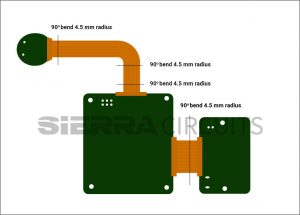Flex PCB Manufacturers
If you are looking to get a flex PCB made in a short time, then you need to find a fab shop that can work with tight deadlines. The best way to do this is to look for a shop with a good reputation and experience handling fast turnaround projects in the past. A good shop will also have the equipment and resources needed to get the job done quickly and efficiently.
Another important consideration is how much a flex circuit costs. This will depend on factors like the number of layers, thickness, materials and surface finish. The cost will also be influenced by whether the board needs to have stiffeners. These are areas of rigid material that are laminated to the flex and are used to provide support for parts or connectors attached to them. PCBway has a detailed calculator that can help you determine how much your design will cost.

flex PCB manufacturer are used to connect electronic components in a variety of different applications. They are particularly suited for environments where the boards need to be able to withstand a high level of dynamic bending. These environments may include consumer, automotive, industrial and military systems. Careful design for aspects such as trace spacing, bend radius, adhesives and vias is required to ensure robust flex circuits that will be able to handle millions of dynamic bending cycles.
Flex PCB Manufacturers and Fast Turnaround Requirements
The most common flexible dielectric substrate for flex circuits is polyimide, which is very tough and can be stretched or bent without damage. It’s also very tolerant of repeated solder reflow cycles and thermal expansion and contraction. Polyimide is ideal for dynamic flex circuits that will be exposed to harsh environments such as high temperatures and vibrations.
Other options for the flex circuit’s core include thin flexible-epoxy and glass fibre films, as well as lead-free, flame retardant and antistatic materials such as Kapton. The choice of these materials is usually driven by the environmental, electrical and mechanical requirements for the final product.
A key factor in determining how tough a flex circuit is is the material that its copper foil is made of. Copper is notorious for work hardening, so to make it more resilient, flex PCB manufacturers will typically use higher-grade rolled-annealed (RA) foil. This will increase the cost, but it will enable the flex circuit to stretch significantly before fatigue cracking starts to occur.
The next layer to be added to the flex circuit is the coverlay, which insulates the outer surface conductors and protects them from corrosion and damage. It’s essential to select a material that can be applied with precision, and is resistant to heat and chemicals. The final step is to add the solder mask, silkscreen and if necessary, plating of edge terminals with gold. These are all standard finishes, but there are a number of options that will influence the cost of the flex circuit.
Once the layers of the flex circuit are prepared and printed, holes need to be drilled and plated. Once this is complete, the flex circuit must be cut to size and affixed to a structural backing board. For a high-volume production run this will be by a hydraulic punch and die, which involves fairly high tooling costs. For prototyping or low-volume runs, a blanking knife is used.